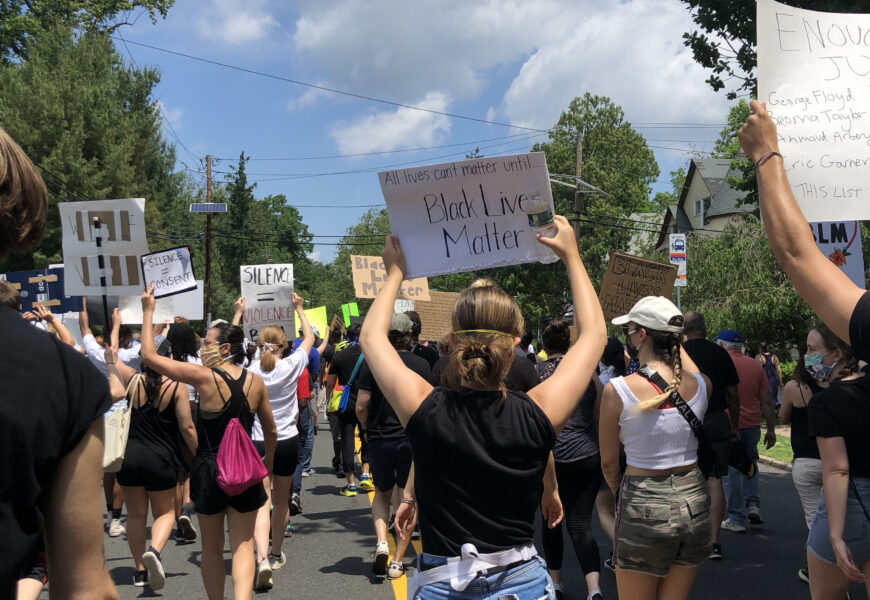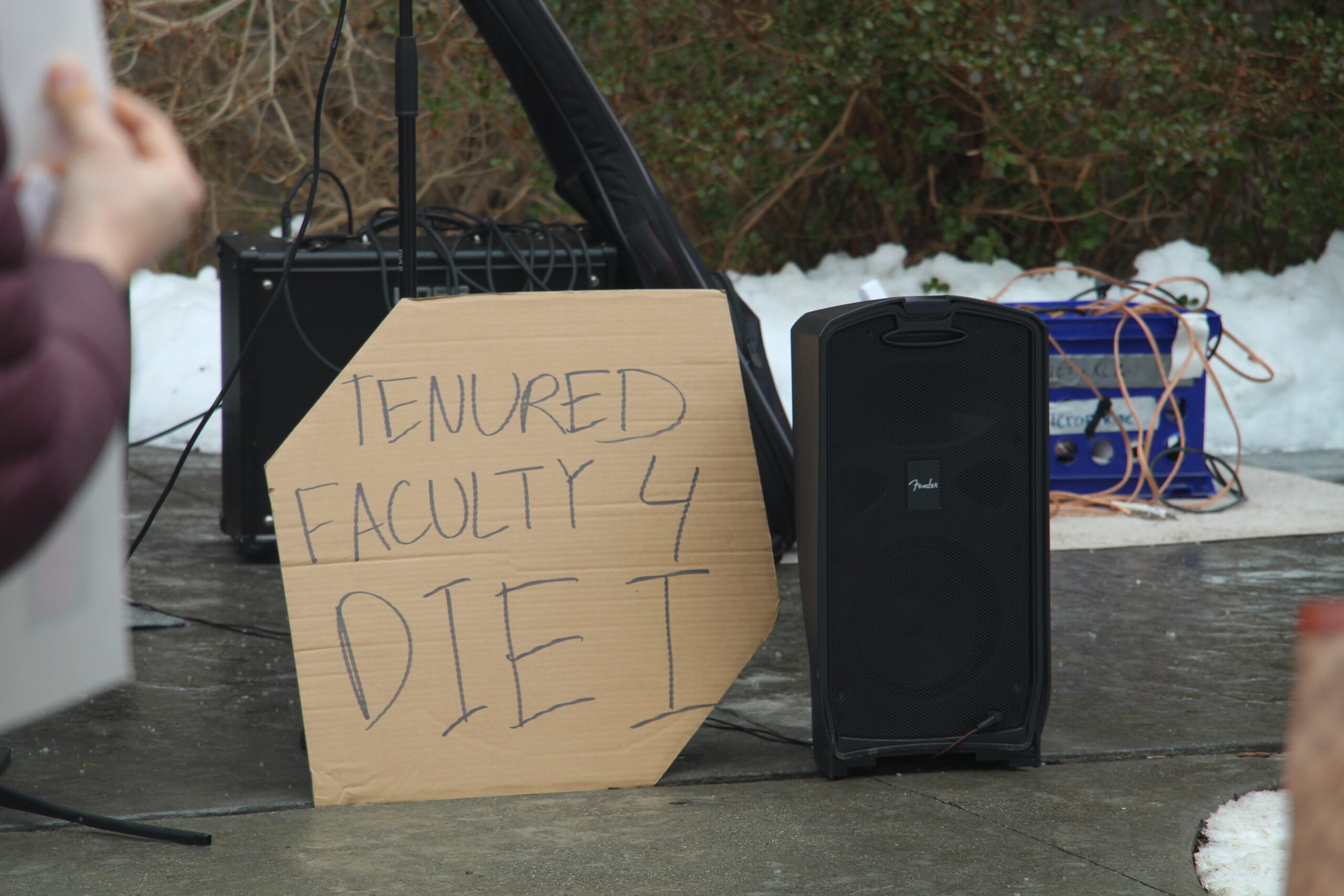Photo courtesy of Leelah Klauber
In 2018 and 2019, bodycam footage captured multiple violent aggressions against BIPOC (Black, Indigenous and people of color) at the hands of Burlington, VT Police officers. At the end of August in 2020, protestors gathered in downtown Burlington to demand the three officers involved be fired, but the department continues to ignore these demands.
One of the videos from Sept. 9, 2018, shows Sgt. Jason Bellavance approach a man arguing with a bar employee. Jérémie Meli, a 24-year-old Congolese immigrant, is heard saying “You guys started the fight” while a second employee taps a finger into his chest. Bellavance shoves Meli who then falls against the building and appears to hit his head. Meli’s brother, Albin, arrives at the scene and begins yelling at Bellavance saying that his brother did not do anything. Bellavance tells Albin to back up and handcuffs Meli whose eyes roll around in their sockets as he is moved away from the wall. Two more officers arrive at the scene: Vincent Ross and Cory Campbell.
The latter of the officers also has a history of violence. In March 2019 Campbell punched 54-year-old Douglas Kilburn multiple times outside the University of Vermont Medical Center. Body camera footage shows Campbell escort Kilburn to visit his wife in the hospital, and then swear at Kilburn after the visit. Kilburn punches Campbell, who in response punches Kilburn. This punch leaves Kilburn bloody and on the pavement struggling to stand, while he is handcuffed and brought to a stretcher. Kilburn’s jaw and eye socket were broken; he died two days later. Chief medical examiner Steven Shapiro ruled Kilburn’s death a homicide, explaining that he would not have died if Campbell had not punched him. Burlington Mayor Miro Weinberger denied this finding and tried to delay the public release of the autopsy.
The night before Sgt. Bellavance attacked Meli in September 2019, Burlington officer Joseph Corrow’s body cam shows him pull Mabior Jok, 34, to the ground. Jok lost consciousness and the video shows a small pool of blood forming on the ground near his mouth. Corrow claimed he was trying to handcuff Jok––who was facing separate charges related to domestic assault––when he began to show resistance.
Towards the end of August, the group The Black Perspective @theblackperspectivevt organized a protest to demand that Joseph Corrow, Jason Bellavance, and Cory Campbell be fired due to their use-of-force against individuals. However, Acting Burlington Police Chief Jon Murad explained in an interview with Henry Epp of VPR that since these incidents occurred in 2018 and 2019 and have been determined not to be criminal acts or are currently under litigation, the officers cannot be fired. While, in the case of Campbell, he was disciplined for using foul language, the department ruled his response as self-defense and justified.
Chief Murad went on to say that this does not mean the Burlington police have not taken action in an attempt to respond to the demands of the protestors. He told Epp: “Many of the things that they’re asking for, aside from the firing of the officers, are things that we are doing that we are willing to do, that we want to work with our community to improve.” These things include using body cameras, releasing body camera footage, improving due process and communication with the community, and limiting the department’s headcount to 74 officers.
But these changes are not enough to address the 401-year-old problem of racism and its influence on how police departments function. Racial justice activist Mark Huges resigned from the Burlington Police Commission earlier this month, stating his frustration in the department’s unwillingness to answer the protestor’s demands. Hughes was appointed to his position in 2019 after the lawsuits against Bellavance and Corrow. Many college students have attended these protests, but Hughes urges more people to get involved; the mayor’s office and police department must respond to the demands of the protestors in order to bring systemic change.
In a post shared by both @bpdaccountability and @vtracialjusticealliance, the daily marches will continue until Corrow, Bellavance, and Campbell are fired, body camera footage is made accessible to the public and is worn by officers at all times, and the Burlington police is defunded to reallocate funds to healthcare and housing. These demands are not dissimilar from those which are at the forefront of Black Lives Matter protests in other cities across the country, but unlike other cities’ protests, those in Burlington have not been covered as widely in the media.
The current news cycle is overwhelmed with ever-increasing COVID-19 cases in the U.S., the upcoming 2020 presidential election, and wildfires in California to name just a few headlines. But this is not a reason to report on one lead and not another. In order to continue the momentum which The Black Perspective and protestors have started in August, national news outlets must support local reporting so individuals remain aware that the Black Lives Matter Movement and fight to end police brutality are not over. Awareness is the first step to joining in support of protestors to influence police departments and local officials to implement systemic change.
This is a solid article, and it brings awareness to the patterns of Burlington Police dep’s violence and how people have responded well. In the beginning paragraphs, when you are describing the play-by-play of events, though, I felt that at times the reader could get lost on who was doing what and when. If you could maybe review this part (in particular Kilburn’s case) I think this would make the piece stronger.











